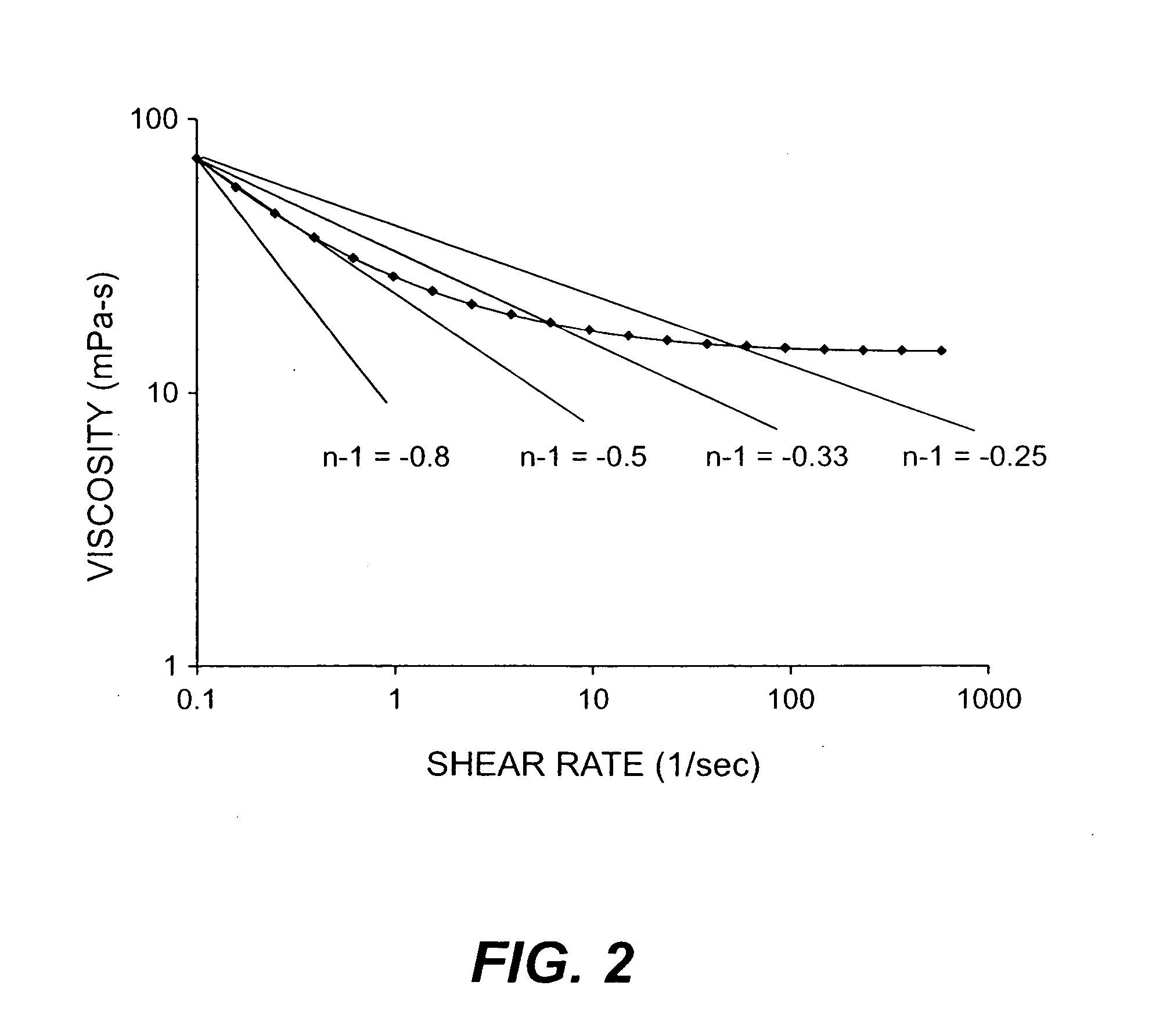Ink jet printing system for high speed/high quality printing
a printing system and high-speed technology, applied in the field of image printing, can solve the problems of non-archival images, difficult to achieve high image densities, and non-uniform printing
- Summary
- Abstract
- Description
- Claims
- Application Information
AI Technical Summary
Problems solved by technology
Method used
Image
Examples
example 1
[0063]Formation of stable drops in an ink jet apparatus using a high percent solids, shear-thinning ink.
Description of Ink:
[0064]A gravure ink from Flint Group, called Arrowvure 5 Cyan Blue® was used in the jetting experiment. The ink contained 34.44% solids, a surface tension of 31.7 dynes / cm, a pH of 9.46 and a median particle size of 0.105 microns as measured by light scattering using a Microtrac® UPA 150 instrument. The rheology of the ink was measured with an Advanced Rheometric Expansion System (ARES®) rheometer by Rheometric Scientific. This instrument controls strain (rotational velocity in a given geometry) and measures stress (torque). The testing geometry used to analyze the sample was a large Couette (concentric cylindrical bob in cup) with a cup diameter of 34 mm, a bob diameter of 32 mm, a bob length of 33.4 mm, and bob height above cup bottom of 4.0 mm. Steady shear rate sweeps were performed at the desired test temperatures of 25° C. and 50° C. For the 50° C. runs, t...
example 2
[0070]Formation of prints on various receivers from an ink jet apparatus using high-percent solids, shear-thinning ink.
[0071]The ink used was the same ink as described in Example 1, except 2 wt. % Dapro DF-1760 defoamer (from Elementis Corp.) and 5 wt. % glycerol were added. The final ink contained 30.17 wt. % solids, a surface tension of 32.0 dynes / cm, a pH of 9.38 and a median particle size of 0.0964 microns. Table 3 gives the viscosity of the ink equilibrated at 25° C. at shear rates from 0.1 / s-1,000 / s. The data in Table 3 show that the ink is shear-thinning at a temperature of 25° C.
TABLE 3Viscosity (mPa-s)Ink in Example 2Shear Rate (1 / s)T = 25° C.0.10018.660.15815.150.25113.610.39812.070.63111.011.00010.241.5859.452.5128.953.9818.536.3108.1610.007.9315.857.7425.127.5939.817.4363.107.33100.07.26158.07.23251.07.27398.07.32631.07.451,000.07.60
[0072]The receivers shown in Table 4 were used upon which to print the ink in Example 2:
TABLE 4ReceiverInternational Paper Carolina Cover CI...
PUM
 Login to View More
Login to View More Abstract
Description
Claims
Application Information
 Login to View More
Login to View More - R&D
- Intellectual Property
- Life Sciences
- Materials
- Tech Scout
- Unparalleled Data Quality
- Higher Quality Content
- 60% Fewer Hallucinations
Browse by: Latest US Patents, China's latest patents, Technical Efficacy Thesaurus, Application Domain, Technology Topic, Popular Technical Reports.
© 2025 PatSnap. All rights reserved.Legal|Privacy policy|Modern Slavery Act Transparency Statement|Sitemap|About US| Contact US: help@patsnap.com



